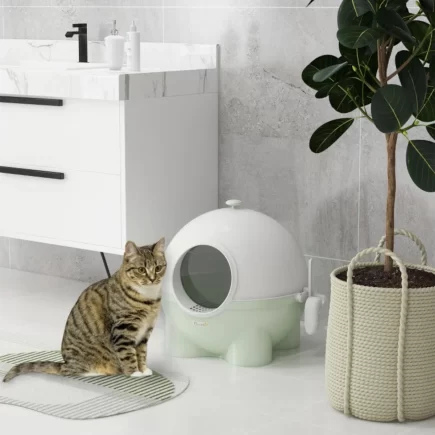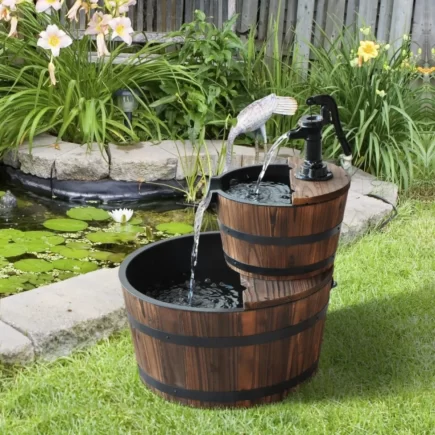Keeping a portable washing machine clean is essential to prevent odors, mold, and buildup that can affect performance. Because these machines use less water than full-sized models, detergent residue and moisture collect faster, making regular cleaning even more important. A dirty washer not only leaves clothes smelling musty but can also cause draining issues and shorten the machine’s lifespan.

The good news is that cleaning a portable washer is simple. By draining the drum, running a hot cycle with vinegar or a cleaner, scrubbing the seals, and letting the unit dry completely, you can keep it fresh and efficient.
Safety First: Preparing Before You Start
Before you roll up your sleeves, prepare both your machine and your workspace. Cleaning a portable washer involves electricity, water, and sometimes strong cleaning agents, so safety matters.
Unplug the Washer
Always disconnect the power supply before cleaning inside or around hoses. Even if you’re only wiping the exterior, it’s safer to work with the machine turned off.

Shut Off the Water Supply
If you plan to detach the inlet hose for cleaning, turn off the faucet first. This prevents unexpected splashes or leaks while you’re working.
Avoid Mixing Cleaners
Never mix bleach with vinegar or other acids. While both are effective separately, combining them produces dangerous chlorine gas. Stick with one method at a time.
Let the Washer Cool
If the washer has just finished a cycle, wait at least 30 minutes before starting. This ensures that both the drum and water connections are cool enough to handle safely.
Tools and Materials You’ll Need
Most of the supplies you need are already in your home. Having them ready makes the process smooth and efficient.
| Item | Purpose |
| White vinegar | Breaks down soap scum, kills bacteria, deodorizes |
| Baking soda | Neutralizes odors, provides gentle scrubbing |
| Mild dish soap | Safe for wiping the exterior and control panel |
| Commercial washer cleaner (optional) | Targets stubborn buildup |
| Microfiber cloths | Gentle on surfaces, streak-free cleaning |
| Old toothbrush | Reaches seals, corners, and grooves |
| Bucket of hot water | For mixing and rinsing |
| Rubber gloves | Protects your hands from hot water or chemicals |
| Small towel | Drying the drum, seals, and lid |

Step 1: Empty and Drain the Washer Properly
Start with a clean slate. Remove any clothing, pods, or fabric softener sheets from the drum.

Most portable washers use a flexible drain hose that can be placed into a sink, bathtub, or bucket. Position the hose lower than the washer so gravity helps water flow out. If water seems trapped, lower the hose further or tilt the washer gently forward.
A fully drained drum ensures that your cleaning solution isn’t diluted and prevents bacteria from growing in leftover water.
Step 2: Clean the Exterior and Control Panel
The outside may not affect how the washer runs, but dust, detergent drips, and fingerprints can transfer inside over time.
Dampen a microfiber cloth with warm water and a small amount of dish soap. Wipe all sides, including the back panel, where dust tends to collect. For tougher stains, use a solution of vinegar and water.
For the control panel, avoid spraying liquid directly. Instead, lightly dampen a cloth and wipe gently. This keeps the display clear and functional without risk of short-circuiting.
Step 3: Remove and Rinse the Lint Filter
The lint filter is one of the most important parts of your washer to maintain. When clogged, it reduces efficiency, traps odors, and can block water flow.
Most portable washers have a lint filter inside the drum, attached to the side, or near the drain. Consult your manual if you’re unsure.
To clean:
- Remove the filter and rinse it under warm water.
- For stubborn lint or soap scum, soak it in vinegar and scrub gently with a toothbrush.
- Allow it to air dry completely before reinserting.

If your washer doesn’t have a lint filter, lint may accumulate in the drain hose instead. In that case, make hose cleaning part of your routine.
Step 4: Run a Hot Water Cycle with Vinegar or Cleaner
This is where the real cleaning begins. A hot water cycle helps loosen grime, flush detergent residue, and kill bacteria.
Vinegar Method
Fill the drum with hot water and add one to two cups of white vinegar. Run the machine on the longest and hottest wash cycle. The vinegar disinfects, dissolves mineral deposits, and neutralizes odors. For added deodorizing power, you can sprinkle in half a cup of baking soda along with the vinegar.
Commercial Cleaner Option
If your washer has heavy buildup, mineral deposits, or odors that vinegar alone won’t handle, use a commercial product. Those cleaners are designed specifically for washing machines and provide a stronger deep clean. Always follow the directions on the package to avoid damage to your unit.
Choosing Between Them
Vinegar and baking soda are excellent for regular upkeep, safe, affordable, and eco-friendly. Commercial cleaners are best used every few months or when the washer needs a deeper clean. Alternating between the two gives you both routine freshness and occasional heavy-duty cleaning.
Step 5: Pause and Soak for Deep Cleaning Power
Instead of letting the vinegar cycle run straight through, pause it after 10–15 minutes.
Allowing the vinegar solution to sit in the drum for 30–60 minutes gives it time to break down stubborn residue, soften mineral deposits, and kill odor-causing bacteria. This step is especially useful if you’ve skipped regular cleanings or notice mold inside the washer.
After soaking, restart the cycle and let it finish.
Step 6: Scrub the Drum, Seals, and Hard-to-Reach Areas
Soaking loosens buildup, but scrubbing ensures it’s fully removed.
Dip a microfiber cloth in the vinegar water and wipe the inside thoroughly. Pay attention to the upper rim, where detergent and fabric softener tend to collect.

The rubber gasket around the lid traps lint, residue, and moisture. Use a cloth soaked in vinegar or a mild bleach solution (never mixed together) to wipe it clean.
For grooves, hinges, or corners, use an old toothbrush to reach spots where a cloth can’t.
Step 7: Rinse Cycle to Remove Residue
After scrubbing, run a full rinse cycle with hot water only.
- If you used vinegar or a commercial cleaner, a single rinse cycle is enough.
- If you used bleach, run two rinse cycles to ensure no residue remains.
Step 8: Wipe Down and Air Dry the Washer
Moisture left inside the washer is the fastest way for mold and mildew to return.
Manual Drying: Use a towel to wipe the lid, and seal immediately after the rinse cycle.
Let It Breathe: Leave the lid open for several hours, or overnight if possible. In humid environments, placing a small fan nearby improves airflow and speeds drying.
Cleaning the Drain Hose and Inlet Hose
Hoses are easy to overlook, but they often harbor buildup that causes odors and poor performance.
Disconnect the drain hose and flush it with hot water. If odors linger, pour in a cup of vinegar, let it sit for 10 minutes, then rinse again.

For the inlet hose, detach it from your faucet and check the small mesh filter inside. Rinse it thoroughly and scrub gently if it has mineral deposits. Reattach securely to prevent leaks.
Mold, Mildew, and Odor Removal Tips
Even with regular cleaning, musty smells can still develop.
- Add half a cup of baking soda to a vinegar cleaning cycle for extra deodorizing power.
- Scrub rubber seals with diluted bleach if you see black mold spots.
- The most effective way to keep odors away is to prevent moisture buildup, make sure you follow the drying routine explained in Step 8 after each use.
Warning Signs You Need to Clean Sooner
- Musty or sour smell from the drum.
- Visible residue inside the washer.
- Clothes coming out less fresh than usual.
- Water drained more slowly than normal.
Troubleshooting Common Cleaning Issues
Even with regular care, you may run into cleaning problems.
Leaks
Check the hose connections first. If they’re tight, inspect seals for cracks. Replacing a hose or seal is inexpensive and prevents water damage.
Persistent Odors
Run another vinegar-and-baking-soda cycle and scrub seals manually. If smells return, cut back on detergent use to prevent new residue.
Soap Residue
Portable washers need far less detergent than full-size machines. Using too much creates buildup that’s difficult to clean.
Common Mistakes to Avoid When Cleaning
Avoiding these mistakes saves time and prevents damage.
| Mistake | Problem | Better Practice |
| Using too much detergent | Soap scum, buildup, odors | Use smaller, HE-sized amounts suited to portable washers |
| Closing the lid right away | Traps moisture; invites mold | Leave lid open as in Step 8 |
| Ignoring hoses | Clogs, leaks, poor drainage | Clean hoses every few months |
| Skipping lint filter cleaning | Reduces efficiency; creates odors | Clean filter regularly (see Step 3) |
Keeping up with regular care makes a big difference in how well your washer performs. By draining water promptly, scrubbing the drum and seals, cleaning the hoses, and letting the unit dry thoroughly, you’ll stop odors and buildup before they start. With just a little effort, your Portable Washing Machine will stay fresh, efficient, and reliable for years to come.
FAQs
1. Is it safe to run a portable washer cleaning cycle with clothes inside?
No. Cleaning cycles should always be run with an empty drum. This ensures the cleaning solution reaches all areas of the washer without leaving residue on clothes.
2. Do portable washing machines need descaling like full-sized washers?
Yes. If you live in a hard-water area, mineral buildup can affect performance. A vinegar rinse or a washing machine descaler every few months prevents scaling.
3. How do I clean the wheels or casters on my portable washer?
Dust and detergent drips can collect around the wheels. Wipe them with a damp cloth and mild soap to keep the washer rolling smoothly.
4. How long should I let my portable washer dry after cleaning?
At least 3–4 hours with the lid open is recommended. In humid areas, leaving it open overnight or using a fan works best.





























